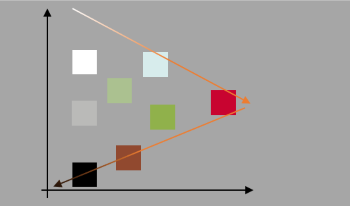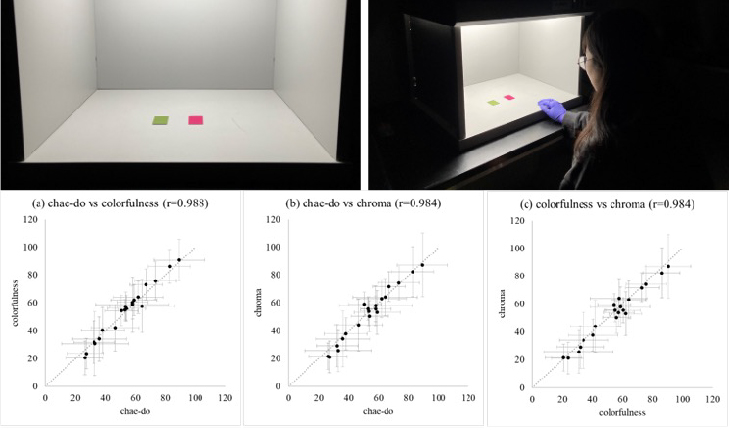
Vividness and Depth are widely used in image and textile industry. And these scales were derived from one-dimensional scales of CIELAB L* and C*ab. However, these scales are limited to relative scales with a reference white, which makes it difficult for them to adapt to the variation in the world. This paper has introduced an experiment that focuses on assessing the wide range of luminance levels in a visual context, ranging from 10 cd/m2 to 10000 cd/m2. The experiment employed a method called magnitude estimation to gauge the perception of Vividness, Depth, Whiteness, and Blackness scales. The judgments were obtained through 10 observer x 40 NCS Sample x 4 lux level x 4 scales x 1.1 (10% repeat set), resulting in a total of 7040 assessments. This article mainly introduces the development of vividness and depth scales using combinations of relative scales, absolute scales, and the mixture scales like CAM16-UCS.

In this study, the relationships between chae-do, the commonly used Korean terminology to describe chromatic attributes, CIE definition for colorfulness, Munsell definition for chroma, Berns’ definition for CIELAB based vividness and depth are investigated. Although only the definitions were presented, without corresponding terminologies, the observers’ responses showed that chae-do is understood very similarly to the definitions of CIE colorfulness and Munsell chroma. Responses for the definitions of vividness and depth also showed high correlation with Berns’ CIELAB based vividness and depth predictions, which shows that definitions were well understood. No correlations were found between the definition of CIE colorfulness and the definition of vividness, which shows that the definition of vividness is understood differently to the definition of colorfulness. Comparing the response with color appearance model predictions, the responses showed good correlation with the predictions. Especially, colorfulness definition responses showed the highest coefficient correlation with CIELAB-based Berns’ depth prediction, implying the possibility of colorfulness predictor modification for better prediction. The findings can be further investigated to observers from other non-English speaking countries and collect meaningful cross-cultural color appearance data.